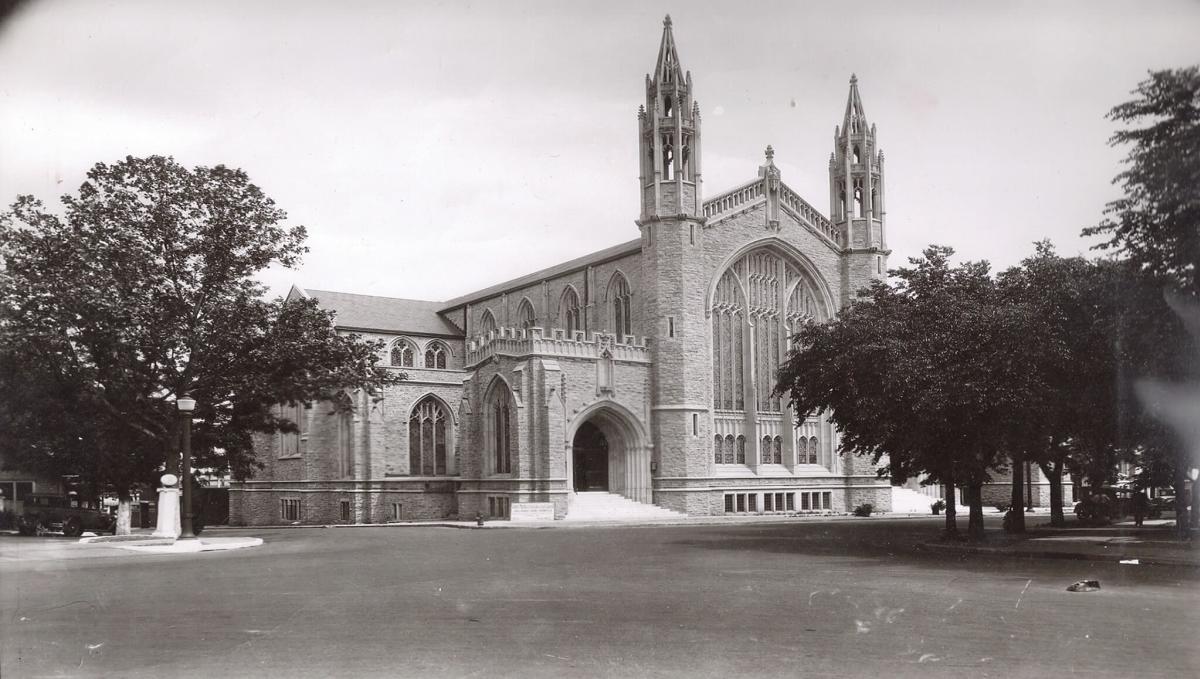Author
Your browser is not supported for this experience.
We recommend using Chrome, Firefox, Edge, or Safari.
Downtown Tulsa is home to a number of grandiose chapels and churches listed on the National Register of Historic Landmarks. Read on below to learn about these remarkable buildings and plan your walking, biking or driving tour while the spring flowers are in bloom and church bells are ringing.
 1301 South Boston Ave., Tulsa, OK 74119
1301 South Boston Ave., Tulsa, OK 74119
Experience some of the best of Tulsa’s art deco architecture at Boston Avenue United Methodist Church. Envisioned amid Tulsa’s 1920’s oil boom, the church embraced the city’s elegance and diverged from traditional Gothic styles. Initial construction was completed in 1929, with several additions built over the last 90 + years including two 35-foot-tall mosaics were added in Great Hall in 1993.
Boston Avenue United Methodist Church has become one of Tulsa’s many icons, recently featured in the background of the Golden-Globe winning, Academy Award-nominated film Minari. Visible from many points of downtown Tulsa, this impressive building is hard to miss.

Completed more than a century ago in 1914, Holy Family Cathedral borrows architectural elements from English, French, and American churches. The cathedral boasts stately columns, soaring vaults, and richly detailed stencils.
The Cathedral’s tall central spire is somewhat unusual in Gothic architecture, as most traditional Gothic churches have two large spires over the front doors. The cathedral also features vivid stained-glass windows, copies of windows made by the Royal Bavarian Institute of Art in Munich, Germany, which were destroyed during World War II.

After a three-year construction process, First United Methodist Church opened first opened its cathedral doors in fall of 1928. Hailed as the “protestant cathedral of the south” upon opening, the Gothic sanctuary was designed by a Philadelphia architecture firm. Nearly 100 years later, this architectural marvel is another Cathedral District classic.

Nestled in the heart of the Cathedral District, the 100-year-old First Christian Church stands out with their impressive clay tile roof and copper cross. Dedicated in 1920, the building has seen many renovations over the years, yet still maintains some of their original features.
The church recently removed the carpet covering their century-old marble floors, and the stained-glass ceiling still has a functional crank system to open a hole in the roof for ventilation. Both outside and inside, this ornate building is one built to impress.

Near the border of the Deco District, the historic First Presbyterian Church of Tulsa was completed in 1925 amid T-Town’s booming oil days. The building has expanded over the last several decades and features ornate stained-glass windows, magnificent spires, and is another stunning example of Tulsa’s lesser-known Gothic architecture.

Highlighted by its traditional Anglican architecture, Trinity Episcopal Church finished construction in 1926, making it the oldest Episcopal church in town.
The building features artistic wood carvings and ecclesiastic stained-glass windows, which include a depiction of the Apostles’ Creed.

One of Lonely Planet's 10 historic Black landmarks to visit in the USA, Mount Zion Baptist Church lies in the heart of Tulsa's Greenwood District. The church was destroyed the same year it was dedicated during the 1921 Tulsa Race Massacre but was rebuilt in 1952 and stands as a testament to the resilience of Tulsa's Black community.
The three-story church features late Gothic Revival architecture and constructed of buff-colored brick veneer over concrete block. The building’s story is one of strength and tenacity and makes it a must-see Tulsa landmark.

Vernon’s present site was purchased by congregation members in 1908 where they would begin constructing a new home for their community. According to the church history, the basement of Historic Vernon AME Church was built in 1919, with construction continuing on the remainder of the building during the years following.
However, the church was heavily damaged during the 1921 Tulsa Race Massacre. Following the destruction, the congregation grew and rebuilt. The main church building was completed in 1928 and serves as a remarkable demonstration of the perseverance and fortitude of the Greenwood community.